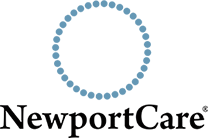The very definition of Contact Sports – sports in which participants come into bodily contact with each other – indicates there is an element of danger involved. The highest rates of sports injuries occur in contact sports. Here is a list of the most common contact sport injuries:
- Concussion / Head injuries: A concussion is a brain injury that occurs from a blow to the head. Symptoms may include disorientation, headache, dizziness, vision disturbance, nausea, difficulty concentrating, and loss of consciousness. They are commonly seen in contact sports such as boxing, football, soccer, and hockey. Sustaining multiple concussions can result in permanent brain damage. If you sustain a concussion, you need to be checked by a doctor as soon as possible to determine the seriousness of your injury. Recovery from concussion may involve rest for a few weeks or months.
- Knee injuries: Torn ligaments and tendons, meniscus injuries, fractures, kneecap dislocations and other types of knee injuries account for more than half of all sports-related injuries. Knee injuries may occur due to direct trauma, abnormal twisting or bending of the knee, falling on the knee, or overuse. To reduce risk of knee injury, wear well-fitting shoes with adequate cushioning, avoid hard surfaces as far as possible, and do exercises to strengthen the muscles that support the knee.
- Shoulder injuries: Being the most mobile joint in your body, the shoulder is very prone to injury and accounts for about 20% of all sports injuries. The most common types of shoulder sports injuries are SLAP tears (tearing of the ring of cartilage around the shoulder socket), shoulder dislocation, and rotator cuff tears. Treatment of shoulder injuries usually involves the RICE protocol which is an acronym for Rest, Ice, Compression, and Elevation.
- Ankle injuries: Ankle sprains are an inevitable part of sports that involve running, jumping, or making sudden turns. Protect your ankles by performing heel raises to strengthen your calf muscles which provide stability and strengthen to your ankles. Taping the ankle and wearing a brace may also help support the ankle and prevent injury. If injured, you should use the RICE protocol and medications if needed to help speed up your recovery.
The best way to avoid sports injuries is to warm-up thoroughly before the game, use proper protective gear, and ensure your fitness & skill level matches the requirements of your sport.
NewportCare Medical Group is a comprehensive specialty group located in Newport Beach, California. Our sports medicine specialists provide treatment for a wide range of sports injuries. Call us today for an appointment.





